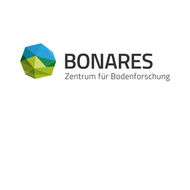Long-term field experiments in Germany: classification and spatial representation (2020)
Grosse M., Hierold W., Ahlborn M., Piepho H., Helming K.
SOIL, 6 (2), 579-596
doi:10.5194/soil-6-579-2020
Abstract
Abstract. The collective analysis of long-term field experiments (LTFEs), here defined as agricultural
experiments with a minimum duration of 20 years and research in the context of sustainable
soil use and yield, can be used for detecting changes in soil properties and yield such as those induced
by climate change. However, information about existing LTFEs is scattered, and the research data
are not easily accessible. In this study, meta-information on LTFEs in Germany is compiled and
their spatial representation is analyzed. The study is conducted within the framework of the
BonaRes project, which, inter alia, has established a central access point for LTFE information
and research data. A total of 205 LTFEs which fit to the definition above are identified. Of these,
140 LTFEs are ongoing. The land use in 168 LTFEs is arable field crops, in 34 trials grassland, in
2 trials vegetables and in 1 trial pomiculture. Field crop LTFEs are categorized into
fertilization (n=158), tillage (n=38) and crop rotation (n=32; multiple nominations
possible) experiments, while all grassland experiments (n=34) deal with fertilization. The
spatial representation is analyzed according to the climatic water balance of the growing season
(1 May to 31 October) (CWBg), the Müncheberg Soil Quality Rating (MSQR) and clay content. The
results show that, in general, the LTFEs well represent the area shares of both the CWBg and the
MSQR classes. Eighty-nine percent of the arable land and 65 % of the grassland in Germany are covered by
the three driest CWBg classes, hosting 89 % and 71 % of the arable and grassland LTFEs,
respectively. LTFEs cover all six MSQR classes but with a bias towards the high and very high
soil quality classes. LTFEs on arable land are present in all clay content classes according to
the European Soil Data Centre (ESDAC) but with a bias towards the clay content class 4. Grassland LTFEs show a bias towards
the clay content classes 5, 6 and 7, while well representing the other clay content classes,
except clay content class 3, where grassland LTFEs are completely missing. The results confirm
the very high potential of LTFE data for spatially differentiated analyses and modeling.
However, reuse is restricted by the difficult access to LTFE research data. The common database
is an important step in overcoming this restriction.
